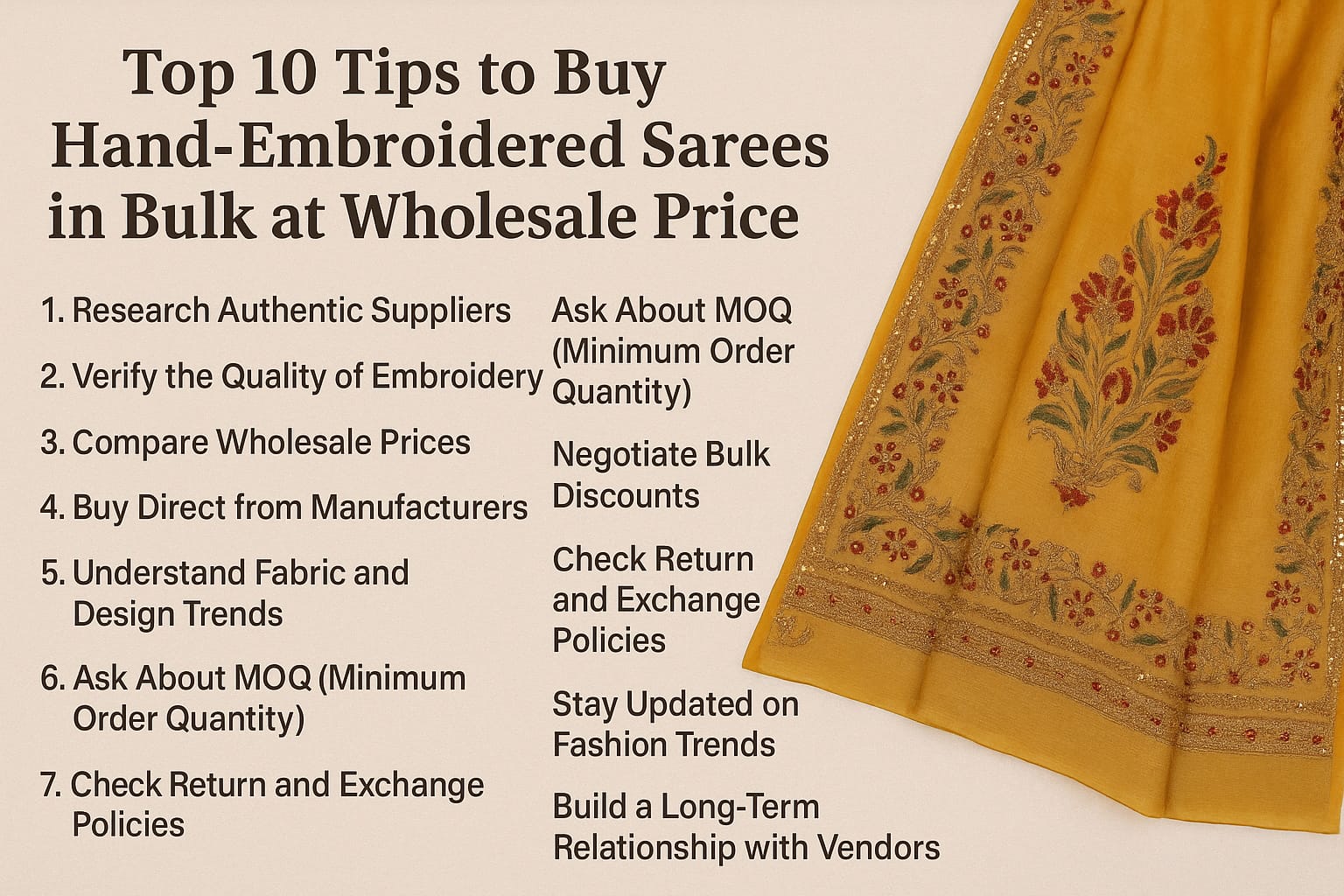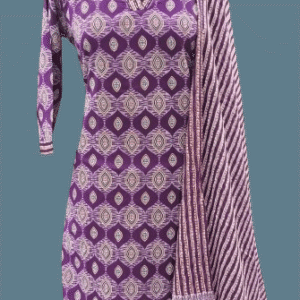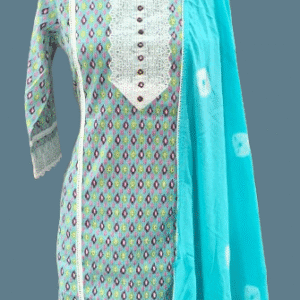Hand-embroidered sarees are timeless pieces of art that combine rich tradition with modern fashion. Whether you are a boutique owner, online seller, or fashion distributor, purchasing these sarees in bulk at the right price is essential for maintaining profitability and quality. Here’s a detailed guide with 10 expert tips to help you buy hand-embroidered sarees at wholesale rates without compromising on craftsmanship or value.
1. Research Authentic Suppliers
Before placing a bulk order, research thoroughly to find authentic and reputed wholesalers or manufacturers. Look for reviews, testimonials, and their portfolio of sarees. Reliable suppliers often have a strong online presence and a registered business identity.
2. Verify the Quality of Embroidery
Not all embroidery is created equal. Ask for samples or high-resolution photos to check stitch quality, neatness, and thread type. Original hand embroidery has slight imperfections that indicate it’s handcrafted, unlike machine embroidery which looks uniform.
3. Compare Wholesale Prices
Don’t settle for the first price quote. Request quotations from multiple vendors and compare the per-piece price, including taxes and shipping. Price varies depending on the intricacy of embroidery, fabric, and embellishments like zari, sequins, or beads.
4. Buy Direct from Manufacturers
Purchasing directly from handwork saree manufacturers in hubs like Kolkata, Surat, or Varanasi eliminates middlemen, reducing costs. Manufacturers often offer better margins and customized designs for bulk buyers.
5. Understand Fabric and Design Trends
Choose embroidery sarees in trending fabrics such as organza, georgette, silk, or chiffon. Opt for evergreen colors like maroon, navy blue, and gold that appeal to a wider customer base. Keep a mix of modern and traditional designs in stock.
6. Ask About MOQ (Minimum Order Quantity)
Each wholesaler has a minimum order requirement. While some might offer flexible MOQs, others may require bulk orders of 50 or more sarees. Clarify this before finalizing your purchase to match your budget and storage space.
7. Negotiate Bulk Discounts
Don’t hesitate to negotiate prices, especially if you’re buying a large volume. Many suppliers offer seasonal discounts or special rates for repeat buyers. Ask for price slabs based on quantity – for example, 50 pieces vs. 100 pieces.
8. Check Return and Exchange Policies
Sometimes, sarees might arrive with damage or not match the sample provided. Always verify the return or exchange policy for bulk buyers. A reliable seller will offer a grace period to report issues and arrange replacements.
9. Stay Updated on Fashion Trends
Follow fashion shows, bridal trends, and celebrity styles to know which type of handwork is trending – be it zardozi, aari, chikankari, or mirror work. Stocking trending sarees increases your chances of faster turnover.
10. Build a Long-Term Relationship with Vendors
Once you’ve found a trusted supplier, try to build a lasting relationship. Regular business brings trust, better pricing, and sometimes exclusive collections or early access to new designs.
Conclusion
Buying hand-embroidered sarees in bulk can be highly profitable if you choose the right source and stay updated with market trends. Focus on quality, design variety, and supplier transparency. Whether you run a boutique or online store, these tips will help you maximize your investment and grow your customer base.
What is the average wholesale price of hand-embroidered sarees?
Prices typically range from ₹800 to ₹5000 depending on fabric, design, and craftsmanship.
Where can I find the best hand-embroidery saree wholesalers?
Cities like Kolkata, Surat, and Varanasi are top hubs for hand-embroidered sarees.
How do I confirm the sarees are hand-embroidered, not machine-made?
Hand embroidery has minor imperfections and is less uniform than machine work. Ask for close-up images or samples.
Can I customize embroidery designs for bulk orders?
Yes, many manufacturers allow customization for bulk purchases.
What is the ideal MOQ for wholesale sarees?
It varies from vendor to vendor but generally starts from 20-50 pieces.












